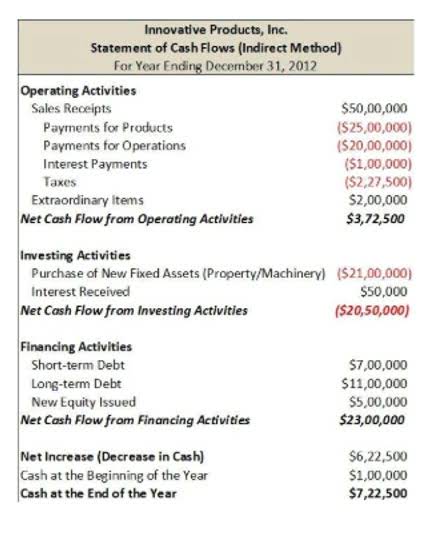How Does Other Comprehensive Income Affect Regular Income?

For instance, coming out of the Great Recession, the banking giant Bank of America reported a $1.4 billion profit on its standard income statement, but a loss of $3.9 billion based on comprehensive income. The difference had to do with OCI and the unrealized losses that took place in its investment portfolio. Overall, it called into question the quality of the profit figures it held out as its real measure of capital generation for the year.
- Regular income is directly added to retained earnings, reflecting the accumulated profit or loss after dividends are paid.
- Comprehensive income adds together the standard net income with other comprehensive income.
- The “Other Comprehensive Income (OCI)” line item is recorded on the shareholders’ equity section of the balance sheet and consists of a company’s unrealized revenues, expenses, gains, and losses.
- The statement of comprehensive income gives company management and investors a fuller, more accurate idea of income.
- OCI provides a broader perspective of a company’s financial health by capturing the total comprehensive income, which includes all changes in equity during a period except those resulting from investments by and distributions to shareholders.
- In March 2018 the Board published its Conceptual Framework for Financial Reporting.
- As you can see, the net income is carried down and adjusted for the events that haven’t occurred yet.
Real-world Examples of Companies’ Financial Statements Showing OCI and Its Impact on Regular Income
Andrew has always believed that average investors have so much potential to build wealth, through the power of patience, a long-term mindset, and compound interest. As how is sales tax calculated you follow the path down through OCI and AOCI, take note of anything suspicious that could signal a potential for hindered growth in the future. The impacts are spread throughout the balance sheet, from Goodwill adjustments to Retirement obligations to the value of Cash and Cash Equivalents.
How Is Other Comprehensive Income Reported?
The interaction between profit or loss and OCI is unclear, especially the notion of reclassification and when or which OCI items should be reclassified. A common misunderstanding is that the distinction is based upon realised versus unrealised gains. It is simply incorrect, to state that only realised gains are included in the statement of profit or loss (SOPL) and that only unrealised gains and losses are included in the OCI. For example, gains on the revaluation of land and buildings accounted for in accordance with IAS 16, Property Plant and Equipment (IAS 16 PPE), are recognised in OCI and accumulate in equity in Other Components of Equity (OCE). On the other hand, gains on the revaluation of land and buildings accounted for in accordance with IAS 40, Investment Properties, are recognised in SOPL and accumulate in equity as part of the Retained Earnings (RE).

What Is Accumulated Other Comprehensive Income?
However, the Board may also provide exceptional circumstances where income or expenses arising from the change in the carrying amount of an asset or liability should be included in OCI. This will usually occur to allow the SOPL to provide more relevant information or provide a more faithful representation of an entity’s performance. Whilst this may be an improvement on the absence of general principles, it might be argued that it does not provide the clarity and certainty users crave. However, there is a https://www.bookstime.com/ general lack of agreement about which items should be presented in profit or loss and in OCI.

Definition and Components of OCI
- An example of the reporting presentation of other comprehensive income appears in the following exhibit.
- The other comprehensive income statement is the profit or loss that the business entity generates but are not shown in the profit and loss statement.
- An entity may refer to the combined statement as the Statement of comprehensive income.
- These are events that have occurred but haven’t been monetarily recorded in the accounting system because they haven’t been earned or incurred.
- Let us look at some other comprehensive income examples to understand the concept better.
OCI consists of revenues, expenses, gains, and losses that are unrealized, and are excluded from net income. In regards to taxes, it is permitted to report other comprehensive income after taxes, or one can report before taxes as long as a single income tax expense line item is included at the end of the statement. This article looks at what differentiates profit or loss from other comprehensive income and where items should be presented. In the case of $ENS, an analyst knowing about the presence of high components of Other Comprehensive Income could also observe the cash flow statement.

Important Categories of OCI
Examples include imports/exports, demand for government debt, fiscal and monetary policy, etc. If we can recognize that foreign currency is playing a big part, we can do more digging to understand why. Note how the company chose to put Unrealized Gains and Losses inside their AOCI calculation, and then adjusted it out of OCI (subtracted $134 as a reclassification away OCI towards Net Income). It defines where those new Unrealized Gains and Losses contribute to the Income Statement, leaving a potential gray area.
How Does Other Comprehensive Income Affect Regular Income?
Regular income, as the concluding figure on the income statement, encapsulates the financial outcome of the company’s activities, serving as a vital tool for financial analysis and decision-making. Regular income, or net income, is the amount of revenue remaining after all expenses, taxes, and costs have been subtracted from total revenue. It represents the profit a company earns from its operations and other business activities over a specific period, usually quarterly or annually.

OCI is reported in the equity section of the balance sheet as part of accumulated other comprehensive income (AOCI), which aggregates the total of OCI items over time. In the income statement, OCI is presented separately from net income to highlight its statement of comprehensive income impact on the total comprehensive income of the company. This separation ensures that users of the financial statements can discern the effects of market and economic fluctuations on the company’s equity and understand the broader scope of income beyond the regular net income. Contrary to net income, other comprehensive income is income (gains and losses) not yet realized. Some examples of other comprehensive income are foreign currency hedge gains and losses, cash flow hedge gains and losses, and unrealized gains and losses for securities that are available for sale.
Everything You Need To Master Financial Modeling
- However, the Board may also provide exceptional circumstances where income or expenses arising from the change in the carrying amount of an asset or liability should be included in OCI.
- The purpose of the statement of profit or loss and other comprehensive income (PLOCI) is to show an entity’s financial performance in a way that is useful to a wide range of users.
- The total comprehensive income, which combines regular income and OCI, provides a full picture of how the company’s financial position changes over time due to both its operational performance and other financial activities.
- Hence, they have to bypass the company’s net income statement—the sum of recognized revenues minus the sum of recognized expenses—which does include changes in owner equity.
In this section, we delve into the components that make up regular income, its significance in financial reporting, and the process through which it is calculated and reported. Recognizing the nuances in OCI and regular income allows stakeholders to assess not just the profitability but also the financial resilience and strategic positioning of a company in a fluctuating economic environment. This comprehensive approach is indispensable for anyone involved in financial analysis, investment decision-making, and corporate strategy, as it encapsulates the full spectrum of financial performance and anticipates future financial health. On the balance sheet, OCI and regular income come together to affect a company’s equity under the broader category of comprehensive income. Regular income is directly added to retained earnings, reflecting the accumulated profit or loss after dividends are paid.
